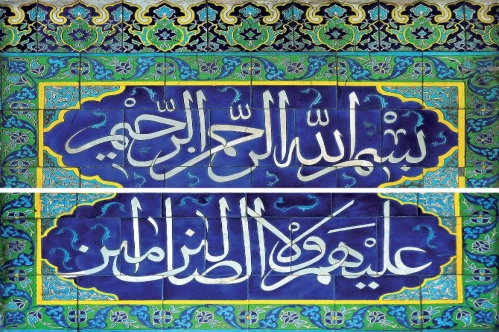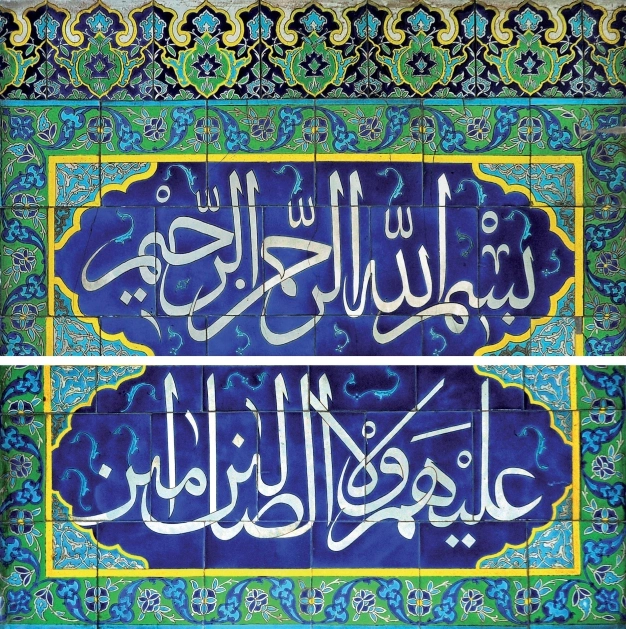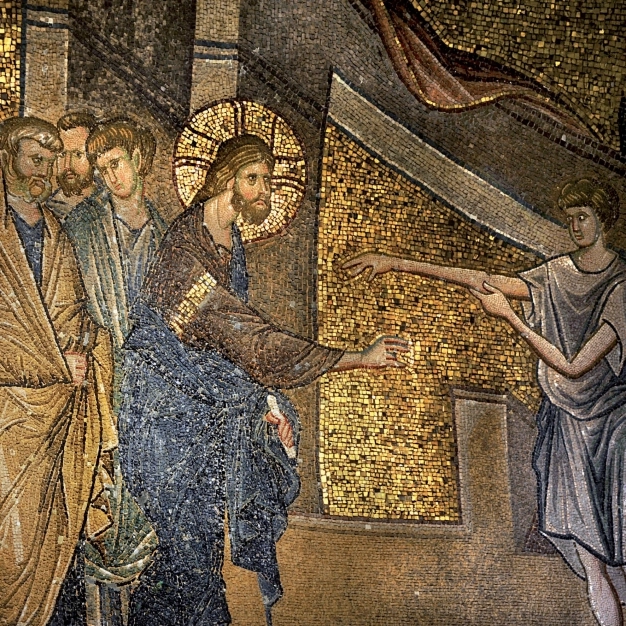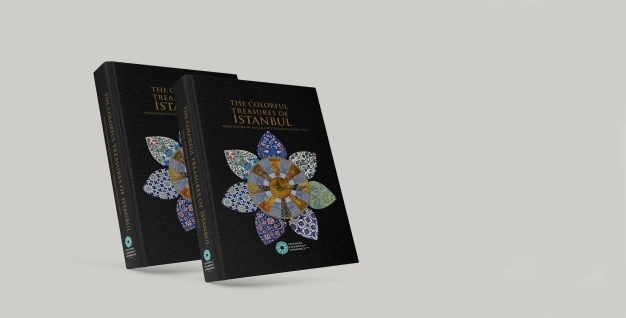- Son Dakika
- Gündem
- Ekonomi
- Finans
- Yazarlar
- Sektörel
- Dünya
- Kültür-Sanat
- Teknoloji
- FOTOĞRAF GALERİSİ
- VİDEO GALERİSİ
- e-Gazete
Gelişmelerden haberdar olmak için İstanbul Ticaret Haberleri uygulamasını indirin

 The dazzling glazed tile art frequently applied in the palaces, mosques, and mausoleums reached a peak with the Bursa Green Tomb in the Ottoman era. It constantly gained momentum and presented all colours ranging from green to blue, red to black.
The dazzling glazed tile art frequently applied in the palaces, mosques, and mausoleums reached a peak with the Bursa Green Tomb in the Ottoman era. It constantly gained momentum and presented all colours ranging from green to blue, red to black.
Capital cities, the administrative centres of empires and states, are also important centres of science and culture. Istanbul was always a fantastic city even before the prehistoric ages, and the city was declared the capital of the Roman Empire by Emperor Constantine the Great in the year 330. The city served as the capital of the Romans. Then it became the capital for Byzantines for a thousand and hundred and twenty-three years. After it was conquered by Mehmed the Conqueror on 29 May 1453, it remained the capital of the Ottoman Empire for 470 years. As a capital city lasting for 1539 years, this past turned Istanbul into one of the world’s rare cultural centres around the globe…The capital city of three civilizations, hosting three divine religions and guiding three continents, in terms of art and culture heritage, Istanbul has the world’s most colourful cultural mosaics.
WALL APPLICATIONS
Istanbul’s importance rapidly increased when the Roman Empire transferred its capital city to the East and since the IV. century, the city is being decorated with magnificent structures that become a capital. Roman architecture principles and decoration traditions were applied to these constructions in an attractive way. Without a doubt, wall mosaics are the most striking part of these traditions. In contrast with the flooring mosaics frequently seen in the Mediterranean geography, wall mosaics are rare.
In the Mediterranean basin, wall mosaics of the Byzantine era managed to survive in a few cities such as Rome and Ravenna and specific structures. There are mosaic decorations in some locations, such as Midyat, Mor Gabriel Monastery and Ephesus ancient city’s hillside houses, which can be observed in single structures. The most dominant manufacturing is in the capital city. From time to time, we come across artists from Istanbul. This decoration becomes rare as we go away from the capital. This decoration technique is mostly applied in the structures built by the rulers are composed by placing the tinseled and colourful glass, rarely stone and ceramic particles side-by-side over plaster.
 MOSAICS OF HAGIA SOFIA
MOSAICS OF HAGIA SOFIA
The most distinctive feature of these mosaics is their shiny, rich appearance. The traces of such magnificence can be found at the Byzantine structures such as the Hagia Sofia, Hagia Irene and the Kariye Mosque. Hagia Sofia, in particular, is the most successful structure with fragments from the nearly entire Byzantine era. Mosaic is a fascinating decoration technique, but its applicationended after the Ottomans’ conquer of Istanbul. Mosaic art reappeared in the façade coating with the influence of modern architecture in the city in the mid-twentieth century and the works of some artists.
OTTOMAN TILES
Ottoman art’s precious decoration technique is the glazed tiles originating from the East. The favourite of the Ottomans, these plates coated with a glass-like layer named ‘glaze’ build a colourful and shiny surface inside the structures. Besides the Tied Pavilion of Mehmed II’s reign and the Mahmud Pasha Tomb, these tiles were used in interior decorations like the mosaics. This material is also prevalent in the rulers’ premises. They were applied on the premises of the rulers and ministers in Anatolia and the Balkans. Their popularity and quality decrease in the cities away from the capital cities. The origins and artists of tile manufacturing in the Ottoman era can be traced easily. These plates manufactured in the Iznik town became one of the favourite materials for the magnificent structures in the capital. They were carefully applied to structures and protected. It has been customized many times for specific structures. The spots for its application were identified during the construction process.
DESIGN CENTER
Beyond merely folk art, the extraordinary applications of the designs of tiles reveal the design and development of the palace’s miniaturists. However, in time, the number of tile applications started to decrease towards the mid-eighteenth century. The manufacturing centres stopped operations, and the artists were scattered around the country. Towards the end of the nineteenth century, the structures missing the glorious old days shine once again with the Turkish neoclassical style. This time, the centre to provide the tiles stand out as the city Kütahya. The compositions designed in Istanbul were manufactured here. These two decoration techniques were manufactured in the capital of the two great empires for long years. Both arts rising in two primary cultures without being influenced by another can be observed together in modern Istanbul. These two realms that are tough to gather managed to unite and survive in this city. These techniques and materials display the similarity of two different worlds in terms of riches, magnificence, and brightness and the differences in expressing themselves. More information on tiles and mosaics can be found at ICOC’s publication ‘İstanbul’un RenkliHazineleri’ (Istanbul’s Colorful Treasures).
 REVISED NEW EDITION
REVISED NEW EDITION
Mosaics and tiles are defined as decoration arts that add magnificence, warmth and authenticity to the palaces, shrines and many other significant structures for thousands of years. A new and revised edition of ‘Istanbul’un Renkli Hazineleri’ (Istanbul’s Colorful Treasures) that defines the mosaics and tiles with examples was published by ICOC. The book enriched with the appealing articles of various authors has a version in English and can be reached via www.kitapistanbul.org.tr
PIONEER OF THE FLOWERS BLOSSOMING IN FLAMES
Mosaic art refers to the wall paintings, floorings and vaults with or without figures composed of small pieces of stones, marble, enamelled glass, glazed tiles, or sea-shells applied over a surface. The word mosaic is a modification of the Latin word ‘Musivum’. On the other hand, Mosaic art was named ‘Psifidota’ in the Byzantine Empire. Mosaic art is on top of the oldest and, at the same time, most modern branches of art.
 WHISPERING INTERLACED COLOURS
WHISPERING INTERLACED COLOURS
Cobalt blue, sea blue, sky blue, turquoise blue, dark blue, purple, blackish-purple, emerald green, grass green, almond green, pale yellow, flame red, brick red, coralline, vermeil…Flowers, lines, designs following and chasing each other, where one ends another one starts, bourgeoning on the same branch, released from the same bud, some tangled into each other while others watch each other from a distance, without contact…One bearing the other, one design leading to another, creating another line, creating countless lines. And they all multiply by changing and integrating as they multiply.